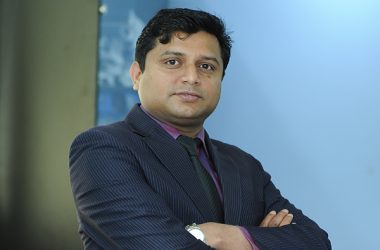Sahara Petrochemicals, based in the Kingdom of Saudi Arabia (KSA), prides itself on maintaining the highest in quality standards and delivering on them consistently to both internal and external customers.
And information technology is a crucial part of ensuring this standard.
“The importance of IT to the functioning of Sahara Petrochemicals cannot be exaggerated. It is absolutely essential for the smooth functioning of the organisation and to ensure that its deliverables are met on time and in quality,” says Ihab Hawari, IT manager at the company.
It is no wonder then that Hawari and his team take their jobs seriously, and they have worked for the continuous success of Sahara since its formation.
“Sahara took shape in late 2004, and even then the senior management gave instructions for the establishment of a data centre. However, we did not build a high availability data centre because we were a small organisation. So we started out with a ProLiant server Gen 3 standalone, had a file server and Active Directory with the necessary assistance of the PC platform. This was the case till 2007,” says Hawari.
With continuing growth and increasing employee numbers, Sahara felt the need for expanding its infrastructure and software base in order to provide scalability and efficiency for future operations.
“In 2007, we decided to establish a high availability data centre. Keeping this in mind we met a few vendors and considered their solutions. HP was one of them. We had initial meetings in Saudi Arabia and follow-up meetings in Dubai. When we had got all the commitments necessary, in terms of solutions and support, we placed the order with HP,” says Hawari.
The set of solutions HP brought to the table for the data centre included servers, SAN storage solutions and a back-up library. In 2009, Sahara upgraded the data centre to add one more enclosure, along with servers and increased the SAN storage capacity from 11 TB to 14 TB.
“During this upgrade, we also implemented virtualisation. We have around 62 physical servers, of which 11 are currently virtualised. VMWare is our virtualisation platform. Currently we utilise virtualisation in the low-end performance servers, with small applications. We do have plans to extend virtualisation to other servers and platforms as well, since we have not encountered any issues with it. Eventually we might decide to go with virtualisation for servers running individual apps. At that point in time, the number of servers we have on hand might increase from the current 62 to nearly 100, without any additional hardware investment,” says Hawari.
He adds that the only thing that looms as a concern for Sahara with virtualisation is the potential single point of failure that such an investment entails, especially when it is carried on to cover the firm’s mission-critical applications.
“Each hardware platform will be running multiple VMWare servers and if this platform gets affected that will mean multiple applications will be out of service. Following discussions with the HP team on this matter we decided to implement a cluster node among two VMWare servers. It will be a double investment, but at the same time it gives us potential for relaxation and also provides us higher availability,” says Hawari.
Early this year, Sahara physically migrated its data centre from one location to the other. Hawari is proud of the fact that the entire migration was completed within 72 hours and involved minimal downtime for the stakeholders at the company.
Software smart
Sahara has been judiciously investing in software solutions to support its business activities as well. SAP forms the core of the company and is run off a bank of 21 servers which, Hawari states, have not been virtualised yet.
“In the short time that we have had since the set up of the actual data centre in the beginning of 2008 (almost 2.5 years now) the IT team has successfully implemented SAP. And we made no compromises in the implementation and in the choice of modules that we needed,” says Hawari.
In 2007, Sahara also implemented a host of solutions from Microsoft including Exchange Server 2007 and Office 2007, and began replacing Windows XP with Windows Vista Enterprise and Business editions.
“Integration was an important point for us to consider when we picked our solutions. This is the reason we went for HP as the single vendor across servers, storage and back-up, thus leaving us with absolutely no integration issues. Then we have SAP as our base ERP, across the network we have Cisco, we have Microsoft providing us with multiple solutions across the desktop and servers, Meridium for availability management, LabWare for information management across our labs, we have plant information management systems, FollowME for print management and so on,” states Hawari.
He adds that the company is still in the stages of implementing Meridium. While 82% of the project has been finished, Hawari expects the solution to go live by the end of June. This year, the firm will also be working on an intranet portal, using Microsoft’s SharePoint to link end-users in the corporation and common data. It will also implement a helpdesk (starting in August) besides taking steps to put in place a disaster recovery platform, starting in September.
“We currently have only one data centre but we are planning to start on a disaster recovery plan in the last quarter of this year. We are not planning on doing this ourselves. We will look to outsource it to the companies that specialise in this kind of business,” states Hawari.
IT strategising
As mentioned, the 21-member IT team at Sahara take its job seriously. This is why they pay a lot of attention to strategising and planning for their investments to ensure that they always meet business needs.
“There are many aspects to strategising for IT. First, there are business requirements. Nowadays, the majority of senior management and business owners rely on IT to support the business. They understand that there is a high cost element connected to technology, but when it comes to the short lifecycle of technology the equation for business owners comes in to conflict. The technology lifecycle is around six years, and that is very short compared to plant, factory or other equipment lifecycles which stretch up to 20 years.
“The strategy here from an IT management point of view is to extend the lifecycle of technology investments, make good selections of solutions from day one, do extensive research on all the solutions that are being considered and keep close to manufacturers and vendors. You also need to keep in mind that the lifecycles mentioned by most vendors will be geared to meet their timetables and need to be considered with a certain amount of salt,” says Hawari.
“The second element of strategy involves understanding the business. We work in the petrochemical environment. I need to support that environment. For that I have to understand the business nature of the petrochemical industry, starting from raw materials, take off and processing, until final product, then logistics, then delivery to the customer, then collecting money, paying the supplier, and managing variable costs and assets. I have to understand this and many other things in the business to provide solutions. To serve, optimise and make things easy in terms of best practice is most important, because most of the mistakes made by organisations these days are linked to the way they hire people. These people come with an old philosophy from their last employer and they want to deploy the same. The management at Sahara has decided to go with global best practices, and has given strict instructions to every business owner that they have to follow the same. This gives us a little bit of harmony and smooth employment of services,” Hawari states.
Sahara’s IT team constantly tracks business requirements through an IT steering committee. The committee, which meets once a week or a minimum of once a month, discusses all the business plans of the organisation and what is on the cards for the next quarters. Following this, Hawari presents his solutions for consideration during the following steering committee meeting, which will then be discussed and a solution selected. The committee involves senior management and other mid-level managers, apart from the IT team.
He points to the case of the company’s unified communications system as a typical example of a solution that is keyed for business priorities. The solution, which provides single sign-on, extension availability and advanced mobility features helps end-users in the organisation to communicate with their customers, supplier and internal stakeholders whether they are at office, outside the campus or even outside the country. The company’s IT team works on these solutions to ensure that communication needs are met proactively, as much as it works on others to derive high performance levels.
“We have challenges with some of the platforms and operating systems, in terms of performance but we manage it with the technology vendor. We also try to address and avoid integration issues as far as possible. Our other major challenge is to find the right IT resources. Finding the right IT professionals is very difficult nowadays. We have had reasonable success though in hiring people – some of them came with considerable experience and others were hired fresh. The fresh hires were trained in-house for around six months, until they were judged to be capable of going live with the technology and provide support and development requirements on it as necessary,” says Hawari.
Moving ahead
Going ahead, Hawari has no doubt that he and his team will be able to continue their support for the business operations of the company, and he credits the senior management’s continuing belief in the IT department as a key factor for the success of their operations so far. He does, however, have a message for vendors in the regional industry.
“Vendors have to keep close to their customers and understand their requirements. They should help the customer select wisely and provide them with scenarios of how solutions will work in their particular environments and how this will affect data integrity in those particular situations. They should not focus on just their business; in fact, focusing on customer requirements will help them in the long term. They should also pay more attention to their after-sales support initiatives. HP has been one of the better ones in the region in providing support to its customers,” says Hawari.
“Regional organisations, especially ones that are just starting out with their data centre investments, should study their requirements thoroughly, consider themselves as a business owner, and consider investments only in the light of business objectives. And, IT managers have to constantly try and read between the lines of what the business owner is asking, to get hints on what is not included in the plan given to him, to see the possible challenges and issues in any business need, and solve them proactively before they raise their ugly heads. That is my message to regional CIOs,” concludes Hawari.
Quick look at Sahara Petrochemicals
To make use of the support offered to the industrial sector in Saudi Arabia, especially in petrochemical manufacturing projects, Zamil Group, one of the largest business houses in Saudi Arabia handled the formation and sponsored Sahara Petrochemicals, a Saudi joint stock company with a paid up capital of more than one billion Saudi Riyals. Sahara Petrochemicals participates in and supervises the foundation and establishment of several limited liability companies in Al Jubail Industrial City with the participation of Saudi and foreign companies that have modern skills and technologies to produce and market chemical and petrochemical products such as propylene, polypropylene, ethylene and polyethylene.
Sahara Petrochemicals was founded to be one of the pioneer industrial pillars in Saudi Arabia, especially the petrochemical industry, which evolved in the late seventies and has developed into one of the pioneer manufacturing and exporting sectors in the Kingdom of Saudi Arabia.





